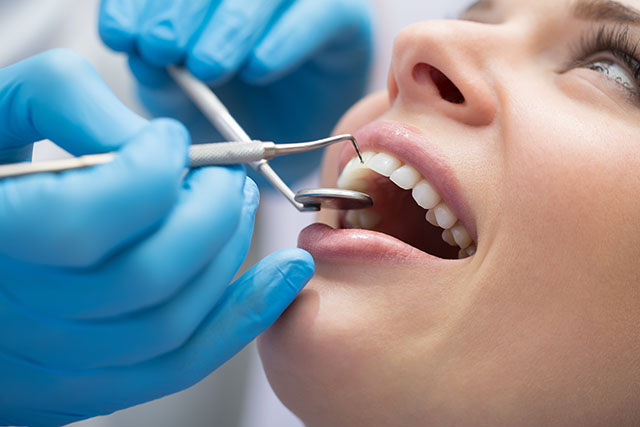The family dentist in Fishers, IN, and their team of oral hygienists are well-equipped and skilled to offer preventive dental services like oral prophylaxis. Plaque and bacteria pose significant threats to oral health, often resulting in a range of dental issues such as tooth decay, gum disease, and premature tooth loss. Oral prophylaxis, a professional dental procedure, involves the removal of plaque and bacteria from above and below the gum line, trying to prevent the advancement of gingivitis (inflammation of the gums) to periodontitis (advanced forms of gingivitis involving the bone).
What is the goal of oral prophylaxis?
Prophylaxis is an excellent procedure to get rid of dental plaque and bacteria. It is performed for the following reasons:
To eliminate calculus
Tartar (calculus) is the hardened version of plaque that gets deposited above and below the gum line. If left untreated, it can lead to periodontal diseases. Regular brushing and flossing do not reach the plaque in deeper layers, thus worsening the condition. Prophylaxis uses special equipment that can effectively remove plaque and tartar.
To enhance your smile and aesthetics
Prophylaxis can help get rid of unsightly stains and teeth discoloration to restore your smile.
To manage halitosis
Periodontal diseases are most often accompanied by halitosis (bad breath) due to the rotting of the food particles subgingivally (below the gum line). Teeth cleaning helps to get rid of bad breath by eliminating plaque and bacteria.
To detect other health issue
It is believed that most often health problems first present themselves in the oral cavity. Through thorough dental examination and cleaning, dentists can detect several health issues, such as diabetes and kidney problems. Dentists can also detect early signs of oral cancer.
What are the steps involved in oral prophylaxis?
Supragingival cleaning
Involves plaque removal from above the gum line
Subgingival cleaning
Plaque removal from the gum pockets and beneath the gum line.
- Root planing Involves smoothening of the roots to eliminate residual bacteria.
- Antibiotic medications: Antibiotic or antimicrobial cream is placed in the gum pockets to promote healing.
- X-ray and examination: A thorough dental exam and routine X-rays can help evaluate the amount of gum and bone loss in periodontal disease patients. It also identifies areas that require special attention in the future.
Oral prophylaxis, also known as teeth cleaning, serves as a valuable method for removing plaque and bacteria, thereby enhancing oral health and revitalizing the appearance of your smile. Schedule an appointment with your dentist to get your teeth cleaned to improve your overall oral health and wellness.

